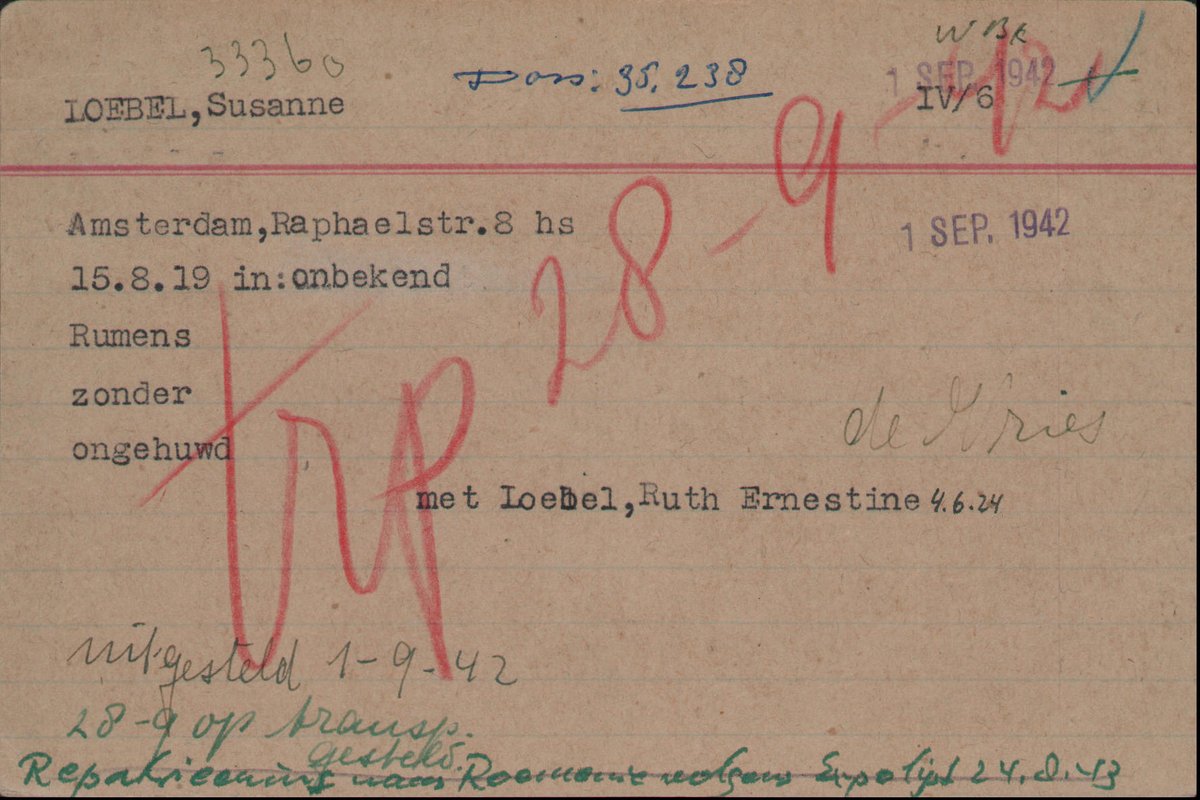
@AuschwitzMuseum (1/n) Meijer was married to Branca, born 05-04-1887. They had 3 daughters:
> Anna Rosina, born 27-03-1911
> Eva, born 18-11-1913
> Dina, born 26-07-1918
Meijer was born in a poor family. He had to work, from the age of 10, in a pottery factory (📷1).
⬇️


> Anna Rosina, born 27-03-1911
> Eva, born 18-11-1913
> Dina, born 26-07-1918
Meijer was born in a poor family. He had to work, from the age of 10, in a pottery factory (📷1).
⬇️



@AuschwitzMuseum (2/n) In 1923 the factory where he worked moved from Amsterdam to Gouda, so he was fired.
After that, self-taught Meijer Smeer, earned his living mainly as the conductor of several choirs, mostly in Amsterdam. He, and his choirs, won several prizes at singing competitions.
⬇️

After that, self-taught Meijer Smeer, earned his living mainly as the conductor of several choirs, mostly in Amsterdam. He, and his choirs, won several prizes at singing competitions.
⬇️


@AuschwitzMuseum (3/n) He had conducted at least 14 choirs.
But in 1941 he was no longer allowed to be director and they became without income.
Their daughter Dina married Semaria (Mario) Gabay on 23-04-1942. As Semaria had a Turkish passport they didn't have to wear the yellow star.
⬇️



But in 1941 he was no longer allowed to be director and they became without income.
Their daughter Dina married Semaria (Mario) Gabay on 23-04-1942. As Semaria had a Turkish passport they didn't have to wear the yellow star.
⬇️




@AuschwitzMuseum (4/n) (Turkey was considered a neutral state).
On 30-03-1943 their daughter Serica Bianca was born. Although they were relatively save, because of Semaria's Turkish passport, they decide to go into hiding. Meyer and Branca also went into hiding.
⬇️
On 30-03-1943 their daughter Serica Bianca was born. Although they were relatively save, because of Semaria's Turkish passport, they decide to go into hiding. Meyer and Branca also went into hiding.
⬇️

@AuschwitzMuseum (5/n) In January 1944 Dina met her cousin Branca Simons in Amsterdam. Dina told her that they had just moved to a hotel. Dina was unaware of the fact that her cousin, also Jewish, worked for the Germans. Branca tells the Germans about her cousin and they got 'arrested'.😠
⬇️
⬇️
@AuschwitzMuseum (6/n) The same day Meijer and his wife are also 'arrested'. They are almost immediately deported, via Westerbork, to Auschwitz.😢
Dina's daughter dies in Westerbork on 28-02-1944. (11 months)💔
Dina & Semaria were deported with the last transport on 03-09-1944 to Auschwitz.
⬇️
Dina's daughter dies in Westerbork on 28-02-1944. (11 months)💔
Dina & Semaria were deported with the last transport on 03-09-1944 to Auschwitz.
⬇️
@AuschwitzMuseum (7/n) This is the same transport as Anne Frank and her family were on.
Dina and Semaria were both selected into the camp and died a few weeks later.😢
Dina's sister Eva marries as a non-Jewish husband which saved her life.
⬇️
Dina and Semaria were both selected into the camp and died a few weeks later.😢
Dina's sister Eva marries as a non-Jewish husband which saved her life.
⬇️
@AuschwitzMuseum (8/n) Dina's other sister Anna Rosina, her husband and their daughter Vera, born 16-04-1936, fled to France on the day the Germans invaded the Netherlands. In Toulouse Vera's brother Eduard Martin is born on 23-05-1942.
⬇️
⬇️
@AuschwitzMuseum (9/n) Later they were able to escape to Switzerland and because Eduard was under the age of 6 they were allowed to stay.
They had hid their official documents all the time in Vera's doll.
⬇️
They had hid their official documents all the time in Vera's doll.
⬇️

@AuschwitzMuseum (10/10) Meijer we will remember you and your poor family members.😢💔🕯️✡️
The complete story in Dutch:
joodsmonument.nl/nl/page/457335…
(translated) English:
translate.google.com/translate?dept…
The complete story in Dutch:
joodsmonument.nl/nl/page/457335…
(translated) English:
translate.google.com/translate?dept…

• • •
Missing some Tweet in this thread? You can try to
force a refresh



























